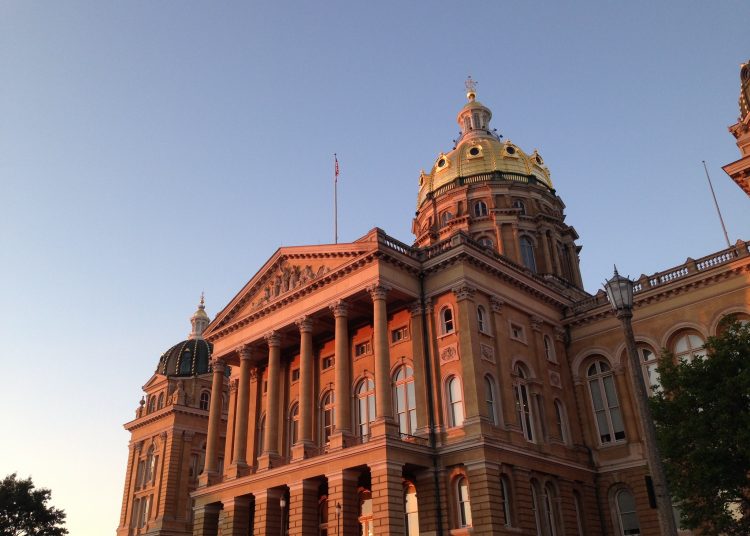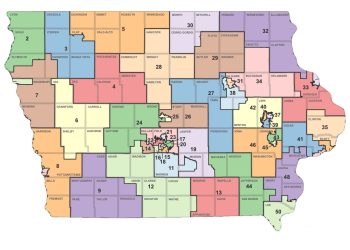Sound fiscal policy must begin with spending restraint. Gov. Kim Reynolds and the Republican-led Legislature continued to follow pro-growth fiscal conservatism during the most recently concluded session.
The Iowa Legislature passed an $8.1 billion FY 2022 state budget, which provided an estimated $1 billion in tax relief to taxpayers instead of growing government. This brings the budget well under the average taxpayer’s ability to pay for it as measured by the Tax Education Foundation’s Conservative Iowa Budget, which sets a maximum threshold based on population growth plus inflation.
This budget is $290.7 million more than the FY 2021 budget. The $8.1 billion budget is over $4 million more than what Gov. Reynolds initially proposed. Nevertheless, Iowa’s fiscal house is in good standing.
The budget spends 97.66% of projected revenues for FY 2022, leaving a projected $385.8 million surplus. There is plenty of money available for a rainy day, including a combined $817.9 million in the Cash Reserve fund and the Economic Emergency fund and $316.4 million in the Taxpayer Relief fund.
Gov. Reynolds and conservatives are criticized by many progressives and liberals who argue that areas of the state budget are underfunded, especially public education and health care (DHS), which includes Medicaid. However, this does not mean that spending has declined.
From 2013 to 2020, Iowa’s budget has grown 1.6 times faster than population growth plus inflation. Last year’s budget (FY 2021), which passed during the pandemic, was considered a “status quo” budget, with spending only slightly higher than the previous year. This is hardly austerity-style budgeting and only in government can slowing the growth of spending be considered a “cut.”
Public education (prek-12, community colleges, and higher education) and health care consume 79.9% of the budget. In FY 1995, both were just 47.2% of total spending, so their share of spending is up nearly 70% since then. State aid to schools continues to be the largest appropriation at $3.4 billion, and added with funding to other payments to public education is 54% of the budget. The health care budget is more than $2 billion.
The growing cost of both public education and health care should concern policymakers. The rapid increase in spending on these programs is on autopilot and is crowding out other budget priorities along with the private sector through higher taxes. Structural reforms to these programs are needed.
Spending restraint is the cornerstone for sound fiscal policy, and thereby helps keep taxes in check. A priority for Gov. Reynolds was making Iowa’s tax code and economy more competitive, while the Legislature provided much needed tax relief.
In part, this tax reform repealed the state’s stringent income tax triggers, which will allow the top rate to fall to 6.5 percent in 2023. This will provide greater tax certainty and create an opportunity for future tax rate reductions. Also, Iowa’s obsolete inheritance tax will be phased-out over a five-year period. The county mental health property tax levy will be phased out, as well.
As a result of prudent spending, the Iowa Legislature can consider further tax reform during the next legislative session. Tax reform in Iowa is far from complete and both individual and corporate tax rates need to be lowered and ultimately eliminated.
If policymakers want to seriously reduce tax rates, allowing for more money to stay with families, and make the tax code more competitive with other states, spending must be prioritized and limited.
Spending discipline is vital, and the Iowa code limits spending to 99 percent of projected revenues. Strengthening the spending limitation by placing it in the state constitution and limiting spending to population growth plus inflation, as outlined in the Conservative Iowa Budget, would better match the average taxpayer’s ability to pay for it every session.
The actions by Gov. Reynolds and the Iowa Legislature offer a clear contrast to President Joe Biden (and Democrats in Washington), who in his first 100 days in office has passed or proposed $6 trillion in new spending. Fortunately, Iowa provides an example of responsible budgeting to federal policymakers and state legislators to provide more opportunity for people to flourish.
















